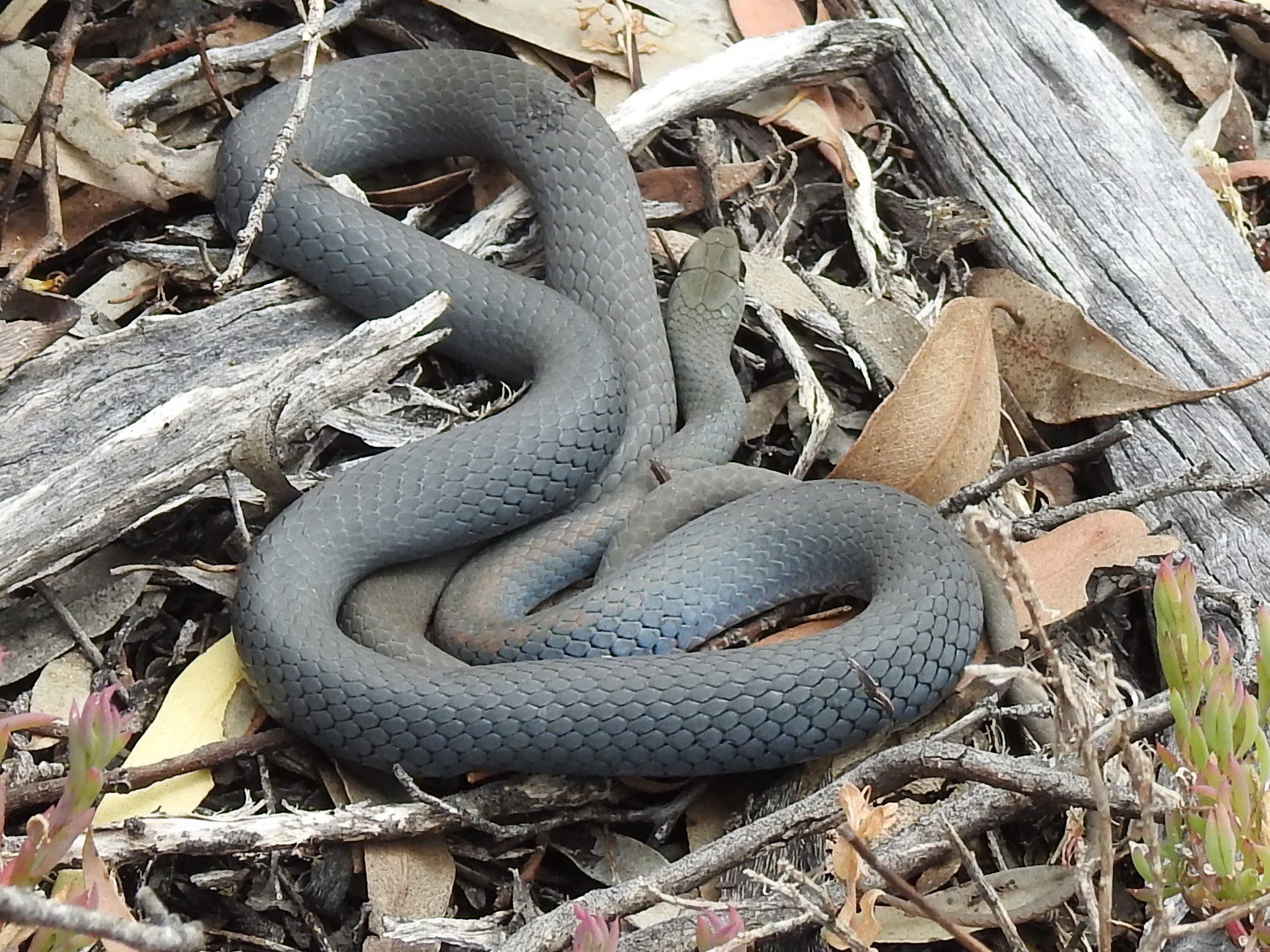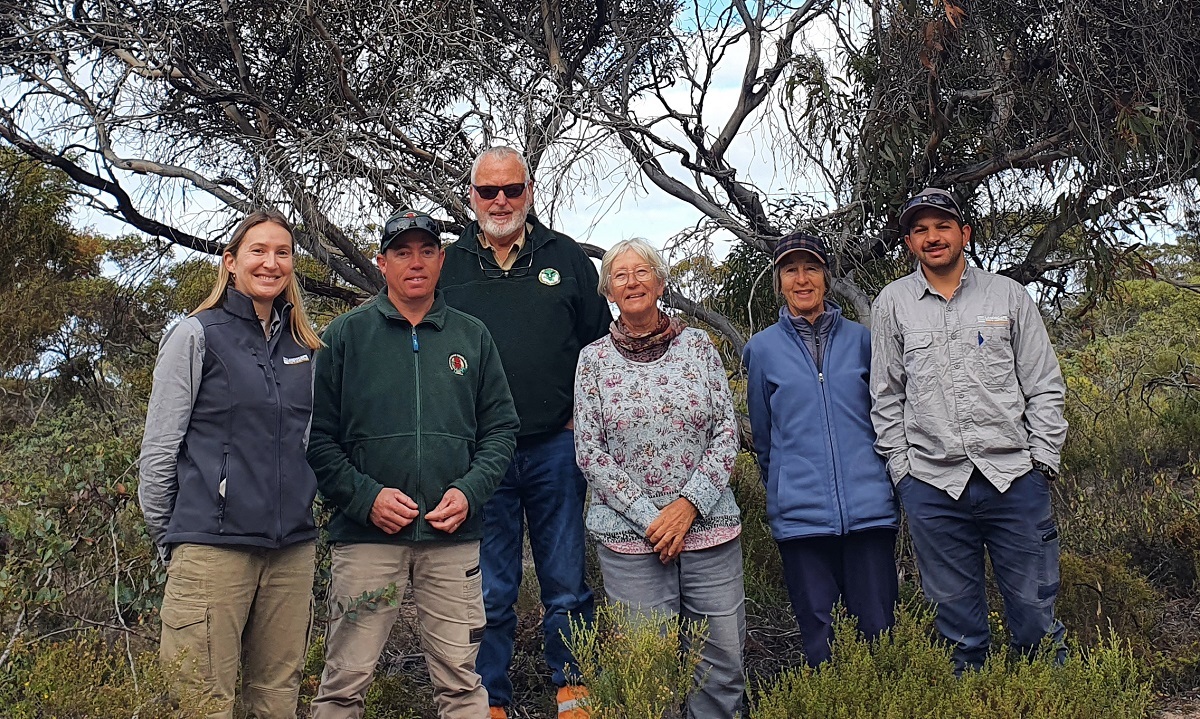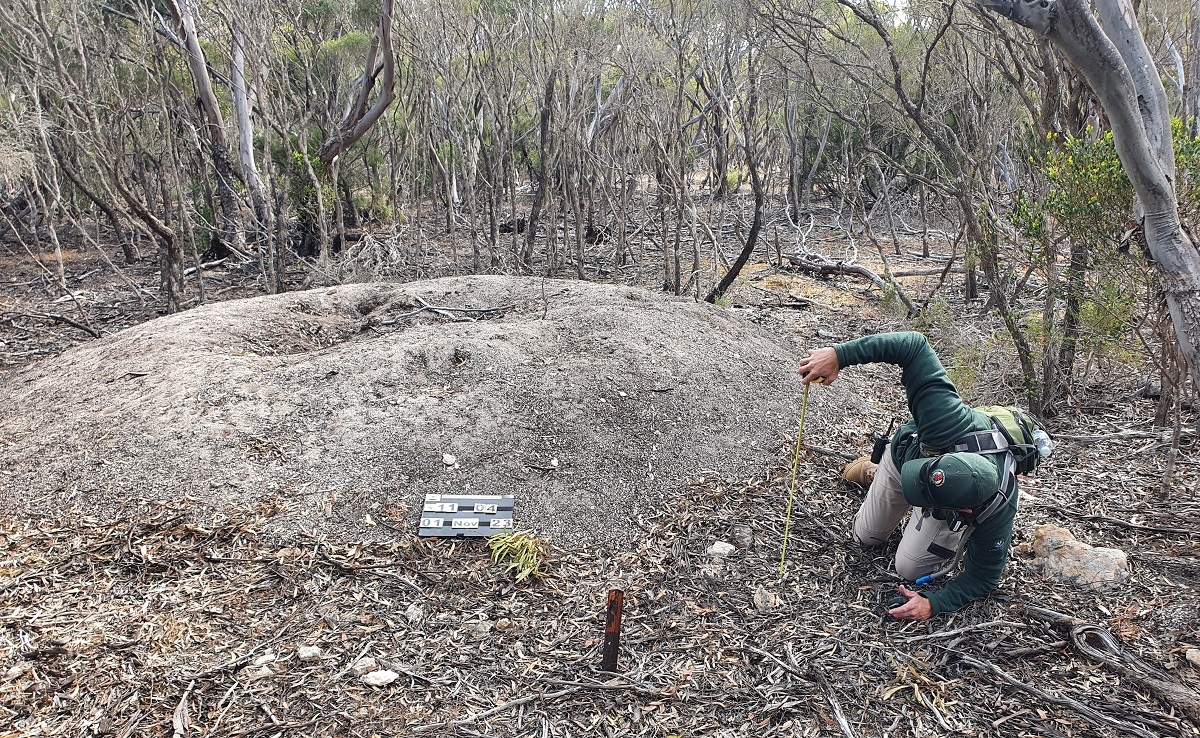Posted on: 16th November 2023
So, a group of Marna Banggara volunteers at Dhilba Guuranda-Innes National Park (DGINP) got a pleasant surprise while monitoring the vulnerable species recently, when a malleefowl returned within metres of them, to continue industriously working on its mound.
Malleefowl are often hard to spot due to their incredible camouflage, which enables them to expertly blend with surrounding vegetation. >> Read 5 fantastic (mallee)fowl facts
The volunteers were at DGINP to monitor malleefowl activity within the park, and the good news is, they recorded seven active mounds.
The numbers were stable on last year’s count.
In all, 46 mounds were surveyed, with seven showing to be active, as part of the annual monitoring program within the Marna Banggara project area on southern Yorke Peninsula.
Keen-eyed volunteers also spotted a native, yellow-faced whipsnake while on their rounds.

As part of the monitoring program, volunteers checked malleefowl mound activity, measured mound height, diameter and depth, took photos and recorded other site data including the presence of egg fragments, and any signs of other animals and predators.
The little master-builders – around the size of a large domestic chicken – construct elaborate mounds of up to five metres across and a metre high to lay their eggs.
The mounds are built from leaf litter, dirt and debris, which breaks down with the help of winter rainfall, creating a cosy compost, and a natural incubator.
Malleefowl mate for life and both the male and female work on the mound from autumn to spring. During egg-laying season, the male takes over mound work when the female is busy feeding to help with egg production. Instead of sitting on the eggs, the male malleefowl keeps a close watch and controls the ‘incubator’ temperature by scattering and returning the ‘compost’ to heat things up or cool them down.
Despite all this attention pre-hatching, once the baby malleefowl hatch, they’re definitely on their own, with both parents leaving them to fend for themselves.

Malleefowl expert, National Malleefowl RecoveryGroup national training and database manager Graeme Tonkin says it is a harsh start for a young Malleefowl.
And with an 80 per cent mortality rate in the first 10 days of their life, only the toughest will survive once they hatch and dig their own way out of the mound.
“It’s a pretty hard life for a young malleefowl, they have no parental care at all once they hatch, they’re entirely on their own,” Graeme said. “They’re very precocial, which means they’re very developed when they come out of the egg.
“The eggs average 210 grams – that’s three-times the size of a large chook egg – and being fully-developed, Malleefowl can flutter up into bushes and trees once they hatch.
“That’s really the only way they can survive, is to get away from ground predators like foxes and cats.”
As a keen malleefowl observer, Graeme says he has seen plenty of malleefowls in DGINP over the 30 years he has been volunteering and following this fascinating bird.
He says malleefowl have become more used to people and machinery working around them at DGINP, in part he thinks due to the previous gypsum operation at Inneston, and are “less flighty and quite calm”.
It is even more reason to keep your eyes peeled for sightings and also be cautious while driving around southern YP and in the Park.
Elsewhere in Australia sightings are far less common, making our region an extra-special area for our feathered friends.
“Some sites you rarely ever see a bird,” Graeme says. “Their camouflage is amazing. I have followed them through the bush for hours and if you take your eye off them and look back, it just disappears.
“It blends so well, that’s why they are coloured like they are, to blend with the Australian bush.”
Armchair viewers can try their luck at spotting a malleefowl at its mound – at a secret location somewhere in Australia - by checking out the live malleefowl mound cam.
The Marna Banggara project was jointly funded by the Northern and Yorke Landscape Board, the Australian Government National Landcare Program, the South Australian Department for Environment and Water, WWF-Australia and Foundation for National Parks and Wildlife, in partnership with Narungga Nation Aboriginal Corporation and with support from the traditional custodians, the Narungga People.

Archive
2024
July
June
2023
- Fantastic (mallee)fowl facts
- Malleefowl surprise for volunteers as count remains stable on previous year
- The bell tolls for native species with domestic cat spotted roaming
- Baby boom update from Marna Banggara
December
November
September
July
June
May
January
2022
- Rewilding reptiles: Using lizards to restore landscapes in South Australia
- Baby boom for first bettongs on Yorke Peninsula in over 100 years
December
November
July
May
March
2021
- Celebrating the return of brush-tailed bettongs to Yorke Peninsula
- Brush-tailed bettongs back on mainland South Australia after disappearing more than 100 years ago
October
September
August
July
April
2020
- Brush-tailed Bettongs: The habitat they like to call home
- The elusive Western Whipbird on song in Warrenben